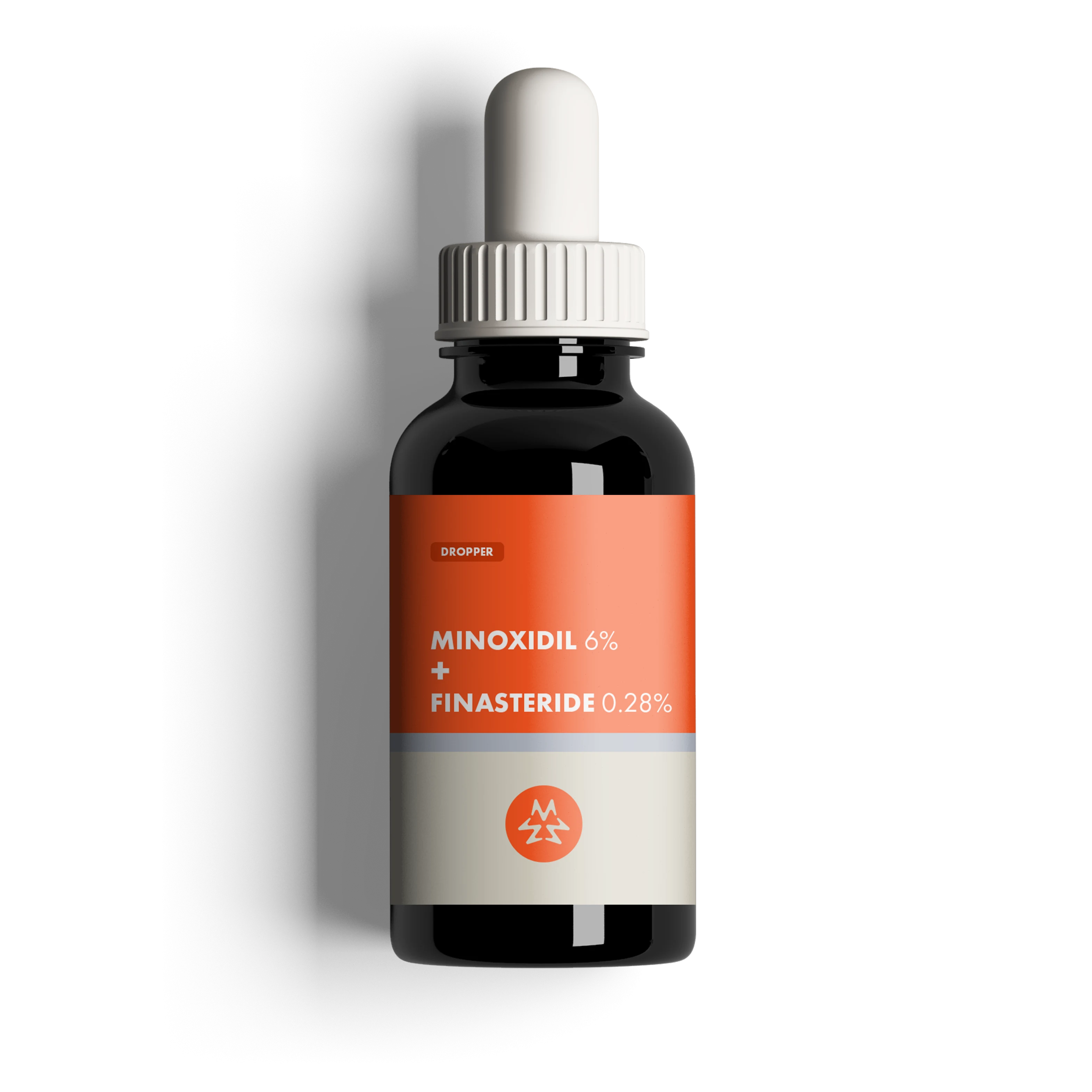The Ultimate Hair Regrowth Formula.
Proven by decades of success
FDA-approved since the '80s and '90s, minoxidil and finasteride have been restoring hair for decades. This dynamic duo is your secret weapon for a fuller, thicker head of hair.
The Hair You Want is Within Reach
FDA approved since 1988 (Minoxidil) and 1992 (Finasteride)

Your Hair Care Treatment Made Simple
Select Program
Minoxidil + Finasteride

Proven by decades of success
FDA-approved since the '80s and '90s, minoxidil and finasteride have been restoring hair for decades. This dynamic duo is your secret weapon for a fuller, thicker head of hair.
Here's how this popular treatment stimulates hair growth:
Finasteride tackles the root cause of male pattern hair loss: dihydrotestosterone (DHT).
You see, DHT causes damage to the hair follicles, leading to thinning and loss over time. The hair follicles in balding areas have higher levels of DHT compared to normal hairy parts of the scalp.
Finasteride works by blocking an enzyme called Type II 5α-reductase. This enzyme is responsible for converting testosterone into DHT. By blocking this enzyme, finasteride lowers the levels of DHT in the body.
Using finasteride and minoxidil together creates a powerful one-two punch that provides superior hair regrowth compared to either treatment alone.
Here's how this power combo works: Finasteride tackles the root cause of male pattern baldness by blocking the hormone DHT. Meanwhile, minoxidil increases blood flow to your scalp. This allows more oxygen and nutrients to reach hair follicles. Research shows this combination is more effective at boosting hair growth than using either medication on its own.

Avoid the appointments, waiting rooms and awkwardness and get treated online. Here is what to expect.
Do everything right from your mobile device
Fast, convenient shipping (discretely packaged)
No commitments – cancel whenever you want
Like any medication, minoxidil and finasteride can cause some unwanted reactions.
Common minoxidil side effects are:
Common finasteride side effects are:
If you experience any of these side effects, don't hesitate to have a conversation with your doctor.
The good news is that both of these medications get to work quickly. In fact, finasteride reduces DHT levels by 65% within the first day. However, hair growth is a gradual process. Don't expect to see dramatic results overnight.
Most men begin to notice small signs of regrowth after about 3 months of consistent use. This may appear as small fuzzy hairs sprouting up in areas that were previously balding.
When you first start using minoxidil and finasteride, don’t be surprised if you notice some extra hair in your brush or shower drain. While increased shedding might seem concerning at first, it's actually a good sign that the hair loss treatment is kicking in.
What's happening is that the minoxidil and finasteride are stimulating your hair follicles to start a new growth cycle ahead of schedule. But, before fresh new hairs can emerge, the old resting hairs need to shed to clear the way. So, a temporary boost in shedding is a positive indicator that these medications are doing their job and spurring new hair growth.
You’ll receive the minoxidil and finasteride solution in a dropper bottle. Here's a step-by-step guide on how to properly apply it:
The short answer is that finasteride is not FDA-approved for use in women. This is primarily due to the potential risk of birth defects if finasteride is taken during pregnancy.
However, some physicians may still prescribe finasteride "off-label" to treat female pattern baldness. This usually only happens in post-menopausal women who are not of childbearing age anymore.
Minoxidil and finasteride are not a cure for hair loss. They are long-term treatments for regrowing hair. It's important to understand that stopping the use of these medications can reverse the progress made, causing the regrown hair to shed within a few months.